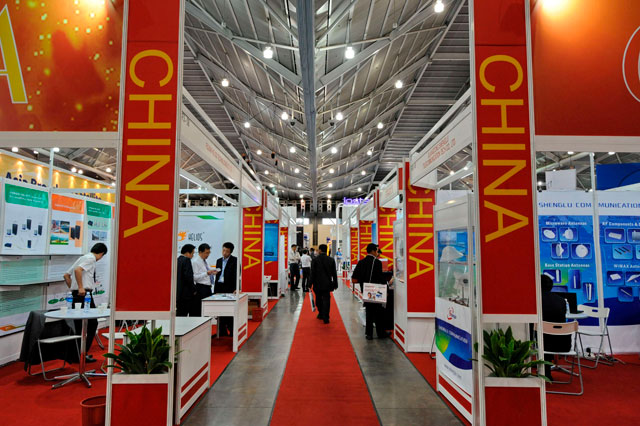Michael Plummer, professor at Johns Hopkins University, has concerns about
China’s influence on Asean’s growth prospects
What is your overall economic outlook?
I am optimistic about the US and the EU in the short run, as well as Japan. In Japan, Abenomics has created a number of concrete policies and they have changed the overall psychology in Japan, even if some uncertainties remain.
So to some degree, quantitative easing in Japan is working. I am reasonably optimistic for Japan.

But China is losing steam…
I am a bit nervous about China. If there is a downside risk in Asia, it will be in China, due to some of the debt issues, which have been a big problem. Furthermore, there are a lot of other structural factors, which put the Chinese growth path at risk.
The years of double-digit growth in China are over. The growth path is much less than people think. Still, that isn’t a problem as long as there is no major disruption and China continues to rebalance.
Nevertheless, there is a non-trivial risk to face a major disruption, with significant implications for Asean. Obviously geo-strategic risks are also in evidence, but hopefully these will stabilise.
What is the economic outlook for Asean?
There is going to be an asymmetrical performance across countries. I am relatively sanguine for the Philippines, and Cambodia, Myanmar and Laos. Next I would include Indonesia, Vietnam and Malaysia.
I am a bit sceptical about prospects in Thailand, because some of the policies that the current Thai government has implemented in the past couple of years will be detrimental to the medium- and short-term growth of the economy. I am quite concerned about that. Of course, there are also political concerns.
Can the region maintain its impressive economic growth rates over the next few years?
Growth rates can be sustained but it will depend on each country’s policy stance. Just remember the Asian financial crisis in 1997. Before the crisis, growth rates were high, driven by investment and exports.
After the crisis, growth rates fell considerably, even by 50%, and a lot of that was due to the fact that investment had fallen considerably. I think that with some of the rebalancing that is going on in some countries, investment and consumption-led growth is very positive.
Some economies are more balanced than others, for example the Indonesian and the Philippine economies are more balanced than the Malaysian or Singaporean ones. All in all, it is moving in a positive direction.
What about the Fed’s monetary policy tightening?
It will lead to some capital outflows in Asean but it will also have the effect of making the currencies more competitive. Remember the financial woes in September 2008.
It is very interesting that during the biggest global shock in 70 years, there was no major financial crisis in Asia. In fact, you saw the dollar shoot up considerably and yet there was no crisis.
Also, the stronger dollar and the weaker currencies in Asia helped to reduce the spillover effects of the crisis and ultimately cushioned the blow.
Some capital outflows will be welcome because there will be less pressure on the exchange rates and a boost to the real sector.

Should Asean try to become less dependent on China?
Asean and China are increasingly integrated. The trade between China and Asean has tripled. However one looks at that, it has to do a lot with regional production networks, which have become so important.
That it is not a bad thing at all; indeed, an important rationale behind the Asean-China free-trade area – and the proposed Regional Comprehensive Economic Partnership accord – is to enhance these networks.
In short, from an economic point of view, Asean does not need to be concerned about closer integration with China.
What do you think about the so-called ‘last frontier’ market, Myanmar?
I am sanguine about the prospects of Myanmar.
It will continue to achieve high growth rates. Of course this country is in the process of very rapid change, and structural adjustment in favour of greater economic efficiency needs to be facilitated and managed by the government.
But this is happening already, and the country is maintaining growth rates in excess of 7%.
To what extent do you see the need for further reform?
The best time to embrace reforms is when the economy is growing and Myanmar is on that path right now. So it is a good time to embrace reforms.
That is what Myanmar is doing. I was in Myanmar a few weeks ago and I was reassured that the government is committed to doing that.
What are the biggest challenges in establishing the Asean Economic Community?
The biggest challenge is to keep an eye on the price of economic integration and on improving competitiveness in the region.
That is what the goal of the AEC needs to be. My big fear is that, once 2015 arrives, the countries will see how difficult it will be to complete everything during the year and will redefine “success” in a much more modest way.
It is really important to make as much progress as possible, and also to continue to work on the goals even after 2015. That should not be an excuse. There is a lot to be done.
The member countries should not feel as though whatever happens at the end of 2015, it’s done.

Photo: Creative Commons/Vicky Hugheston
Would it be wise to foster domestic consumption?
Yes, I certainly do believe that – for most countries. If you look at consumption as share of GDP, a few countries are not particularly outliers, such as the Philippines and Indonesia.
And these two countries, not coincidentally, made it through the major crisis of 2008 relatively well – partially because they are much more balanced. It can be quite problematic to be excessively dependent on net exports. What needs to happen in Asean in terms of policy is the creation of a policy that does not promote net exports, but one that promotes trade, hence exports and imports.
The fact that imports are actually very important is something that often escapes the attention of Asean leaders. Imports are not only good in terms of offering greater variety to consumers, but also in terms of making the economy more competitive.
Econometric research has underscored the great importance of imports in promoting productivity growth, as well as in providing a greater variety of inputs at lower costs for firms, thereby really enhancing competitiveness.
Again, what about China?
China has understood this. China’s private consumption expenditures as a percentage of GDP are currently less than 40%, which makes it a historical outlier for a country at its level of economic development.
Therefore, there is lots of room to grow in terms of rebalancing the Chinese economy, which will be good for Chinese citizens and the rest of the world. As that happens, China will become a much bigger market for Asean as it rebalances.
Do you see some kind of ‘Asean identity’ growing?
People tend to know Asean much more than they did in the old days. An identity is being created and I think this is important for Asean integration. But we should not think that it will override national identities at any point.
Deepening economic integration does ultimately require some loss of “sovereignty” and Asean leaders have always expressed a great hesitation to do this.
Still, such fears are somewhat less than they used to be, and this trend will continue as Asean integration proceeds apace through the Asean communities, such as the economic, political and socio-cultural communities.
In short, Asean integration will facilitate creating an Asean identity, and an Asean identity will facilitate what can be done in terms of Asean integration.
